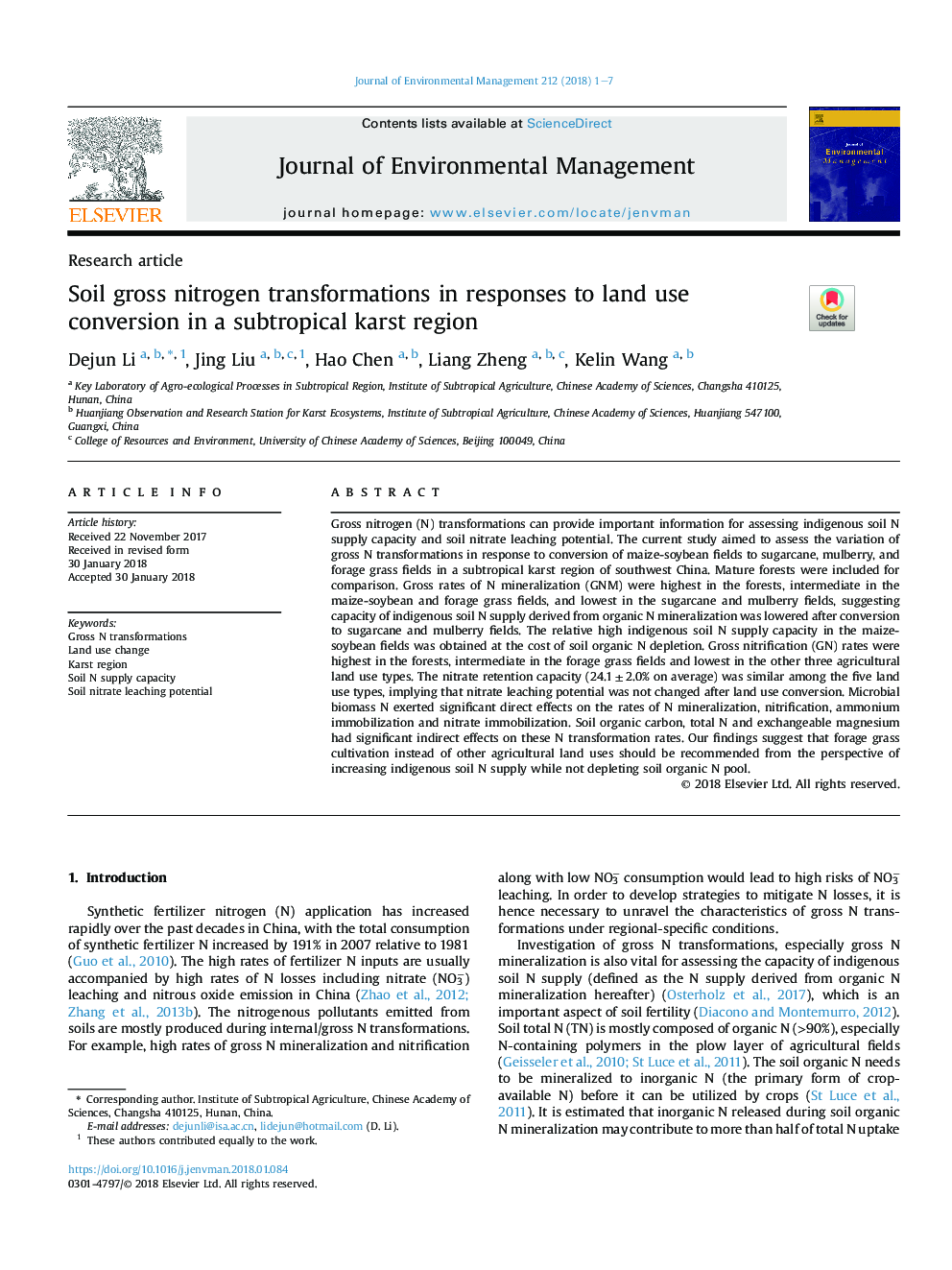| Article ID | Journal | Published Year | Pages | File Type |
|---|---|---|---|---|
| 7477751 | Journal of Environmental Management | 2018 | 7 Pages |
Abstract
Gross nitrogen (N) transformations can provide important information for assessing indigenous soil N supply capacity and soil nitrate leaching potential. The current study aimed to assess the variation of gross N transformations in response to conversion of maize-soybean fields to sugarcane, mulberry, and forage grass fields in a subtropical karst region of southwest China. Mature forests were included for comparison. Gross rates of N mineralization (GNM) were highest in the forests, intermediate in the maize-soybean and forage grass fields, and lowest in the sugarcane and mulberry fields, suggesting capacity of indigenous soil N supply derived from organic N mineralization was lowered after conversion to sugarcane and mulberry fields. The relative high indigenous soil N supply capacity in the maize-soybean fields was obtained at the cost of soil organic N depletion. Gross nitrification (GN) rates were highest in the forests, intermediate in the forage grass fields and lowest in the other three agricultural land use types. The nitrate retention capacity (24.1â¯Â±â¯2.0% on average) was similar among the five land use types, implying that nitrate leaching potential was not changed after land use conversion. Microbial biomass N exerted significant direct effects on the rates of N mineralization, nitrification, ammonium immobilization and nitrate immobilization. Soil organic carbon, total N and exchangeable magnesium had significant indirect effects on these N transformation rates. Our findings suggest that forage grass cultivation instead of other agricultural land uses should be recommended from the perspective of increasing indigenous soil N supply while not depleting soil organic N pool.
Related Topics
Physical Sciences and Engineering
Energy
Renewable Energy, Sustainability and the Environment
Authors
Dejun Li, Jing Liu, Hao Chen, Liang Zheng, Kelin Wang,
